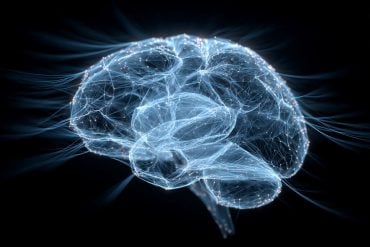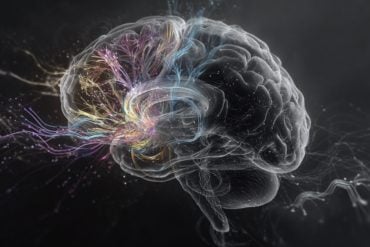Summary: Study highlights how the enteric nervous system acts similarly to neural networks in the brain and spinal cord.
Source: Flinders University
New research explains how the nervous system in the gut, known as the enteric nervous system (ENS) causes propulsion along the gut, highlighting how similar it behaves to other neural networks in the brain and spinal cord.
The study, led by Professor Nick Spencer at Flinders University, maintains that the ENS in the gut is the ‘first brain’ and that it evolved long before the brain as we know it, in humans.
The new findings uncover major new information about how the many thousands of neurons in the ENS communicate with each other to cause the muscle layers to contract and propel content. Until now, this had been a major unresolved issue.
In a new paper in Communications Biology (Nature), Flinders University Professor Nick Spencer, says the latest findings are far more complex than expected and considerably different from the mechanisms that underlie the propulsion of fluid along other muscle organs that have evolved without an intrinsic nervous system; like in lymphatic vessels, ureters or the portal vein.
“Synchronisation of neuronal activity across large populations of neurons is common in the nervous system of many vertebrate animals,” Professor Spencer says.
The researchers took advantage of a recent technical advance from their laboratory which enabled them to record the smooth muscle electrical activity along the length of colon at the same time as correlating electrical activities with dynamic changes in colonic wall diameter, during propulsion.

This process has revealed a key new mechanism that finally explains how all the different types of neurons in the ENS come together and coordinate the firing to generate propulsion of content along the colon.
“Interestingly, the same neural circuit was activated during both propulsive and non-propulsive contractions.”
About this neuroscience research news
Author: Karen Ashford
Source: Flinders University
Contact: Karen Ashford – Flinders University
Image: The image is in the public domain
Original Research: Open access.
“Long range synchronization within the enteric nervous system underlies propulsion along the large intestine in mice” by Nick J. Spencer, Lee Travis, Lukasz Wiklendt, Marcello Costa, Timothy J. Hibberd, Simon J. Brookes, Phil Dinning, Hongzhen Hu, David A. Wattchow & Julian Sorensen. Communications Biology
Abstract
Long range synchronization within the enteric nervous system underlies propulsion along the large intestine in mice
How the Enteric Nervous System (ENS) coordinates propulsion of content along the gastrointestinal (GI)-tract has been a major unresolved issue.
We reveal a mechanism that explains how ENS activity underlies propulsion of content along the colon. We used a recently developed high-resolution video imaging approach with concurrent electrophysiological recordings from smooth muscle, during fluid propulsion.
Recordings showed pulsatile firing of excitatory and inhibitory neuromuscular inputs not only in proximal colon, but also distal colon, long before the propagating contraction invades the distal region. During propulsion, wavelet analysis revealed increased coherence at ~2 Hz over large distances between the proximal and distal regions.
Therefore, during propulsion, synchronous firing of descending inhibitory nerve pathways over long ranges aborally acts to suppress smooth muscle from contracting, counteracting the excitatory nerve pathways over this same region of colon. This delays muscle contraction downstream, ahead of the advancing contraction.
The mechanism identified is more complex than expected and vastly different from fluid propulsion along other hollow smooth muscle organs; like lymphatic vessels, portal vein, or ureters, that evolved without intrinsic neurons.







